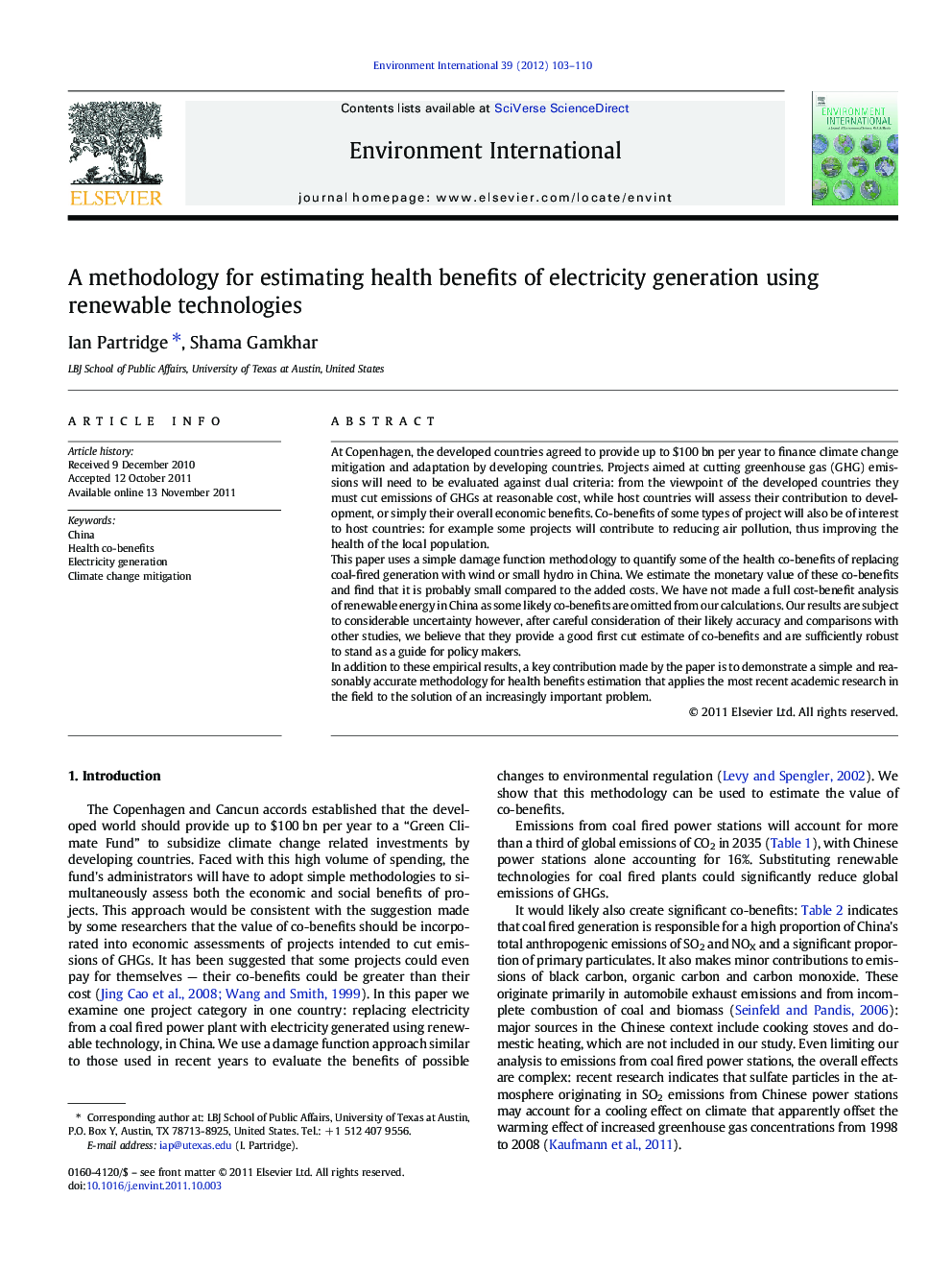| Article ID | Journal | Published Year | Pages | File Type |
|---|---|---|---|---|
| 4423139 | Environment International | 2012 | 8 Pages |
At Copenhagen, the developed countries agreed to provide up to $100 bn per year to finance climate change mitigation and adaptation by developing countries. Projects aimed at cutting greenhouse gas (GHG) emissions will need to be evaluated against dual criteria: from the viewpoint of the developed countries they must cut emissions of GHGs at reasonable cost, while host countries will assess their contribution to development, or simply their overall economic benefits. Co-benefits of some types of project will also be of interest to host countries: for example some projects will contribute to reducing air pollution, thus improving the health of the local population.This paper uses a simple damage function methodology to quantify some of the health co-benefits of replacing coal-fired generation with wind or small hydro in China. We estimate the monetary value of these co-benefits and find that it is probably small compared to the added costs. We have not made a full cost-benefit analysis of renewable energy in China as some likely co-benefits are omitted from our calculations. Our results are subject to considerable uncertainty however, after careful consideration of their likely accuracy and comparisons with other studies, we believe that they provide a good first cut estimate of co-benefits and are sufficiently robust to stand as a guide for policy makers.In addition to these empirical results, a key contribution made by the paper is to demonstrate a simple and reasonably accurate methodology for health benefits estimation that applies the most recent academic research in the field to the solution of an increasingly important problem.
► We model costs and pollution-related health impacts of power plants in China. ► We compare renewable generation to coal-fired to quantify co-benefits of renewables. ► We find that the monetary value of co-benefits is significantly lower than the added cost. ► Health co-benefits do not provide economic justification for projects that cut GHGs.► Our methodology can be used for individual project analysis or at the policy level.
